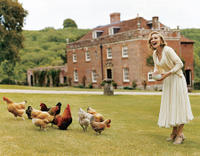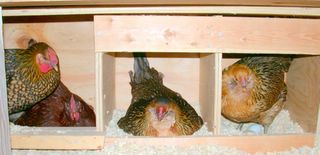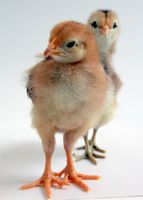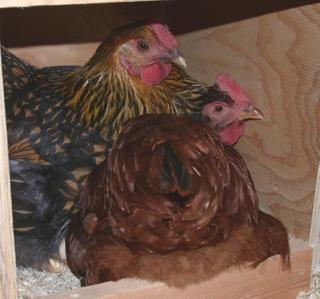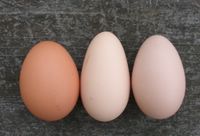Important Egg Information
This site came from my husband, a rarely-heard voice on this blog. Here you will find out that the USDA wants you to know many things about eggs. They include, in no particular order:
Eggs stored in the form of homemade eggnog can last 2-4 days in the fridge and should not be frozen.
Store-bought eggs are dated according to their pack date--not the day the egg was laid, although our government assures us that they generally reach the stores only a few days after they were laid. To simplify things, the "pack date" is expressed as the "Julian date," which means that a number from 1-365 is stamped on the carton to indicate the day of the year when it was packed. (Quick: Day 123. When is that? See how useful this'll be in the grocery store?)
Eggs in the form of a pumpkin or pecan pie can be stored 3-4 days in the fridge or frozen 1-2 months.
Eight government agencies (assuming you count state and local agencies as one each) are involved in assuring the safety of your eggs. Whew! What a relief.
A hen starts to make a new egg about 30 minutes after she's laid the last one. A woman's work is never done. It's always something.
The "sell by" date on your carton of eggs is pretty useless. Eggs are good for about 3-5 weeks in the fridge after you bring them home. The "sell by" date may or may not pass during that time. Maybe what you should do is take the Julian date, add 21-35 to it, convert that to a regular calendar date (what is that--a Roman date? Gregorian date?) and then...wait, I'm lost. How about this: if the egg floats easily in water, meaning that a lot of air has entered the shell, it's older. But maybe still OK to eat if it doesn't smell bad or look funny. Good luck.
In 1950, people ate 359 eggs per year on average. Now it's 261.
Raw eggs will last 3-5 weeks in the fridge, but a hard-boiled egg is only good for a week. Why? When you boiled it, you washed off the protective coating. Not the protective coating the hen put on it when she laid it--they washed that one off at the factory. No, we're talking about the light coating of mineral oil the factory applied to re-coat it with another, better, safer, protective coating that is a vast improvement over what that silly hen did. What does she know about protecting eggs, anyway?
Read about all this and more at:
Focus On Shell Eggs







